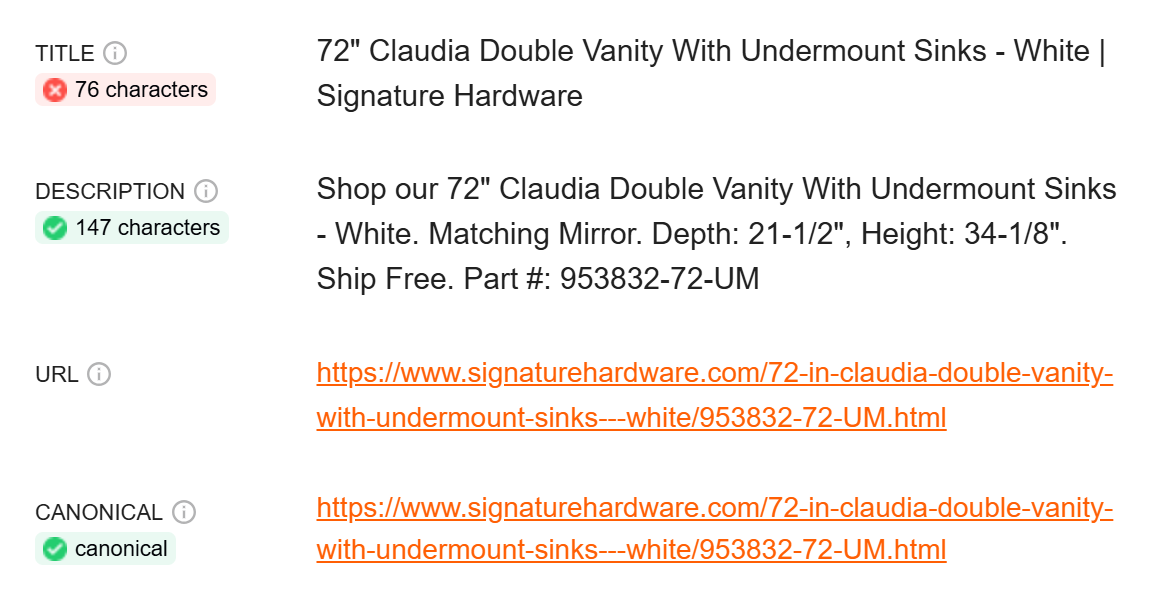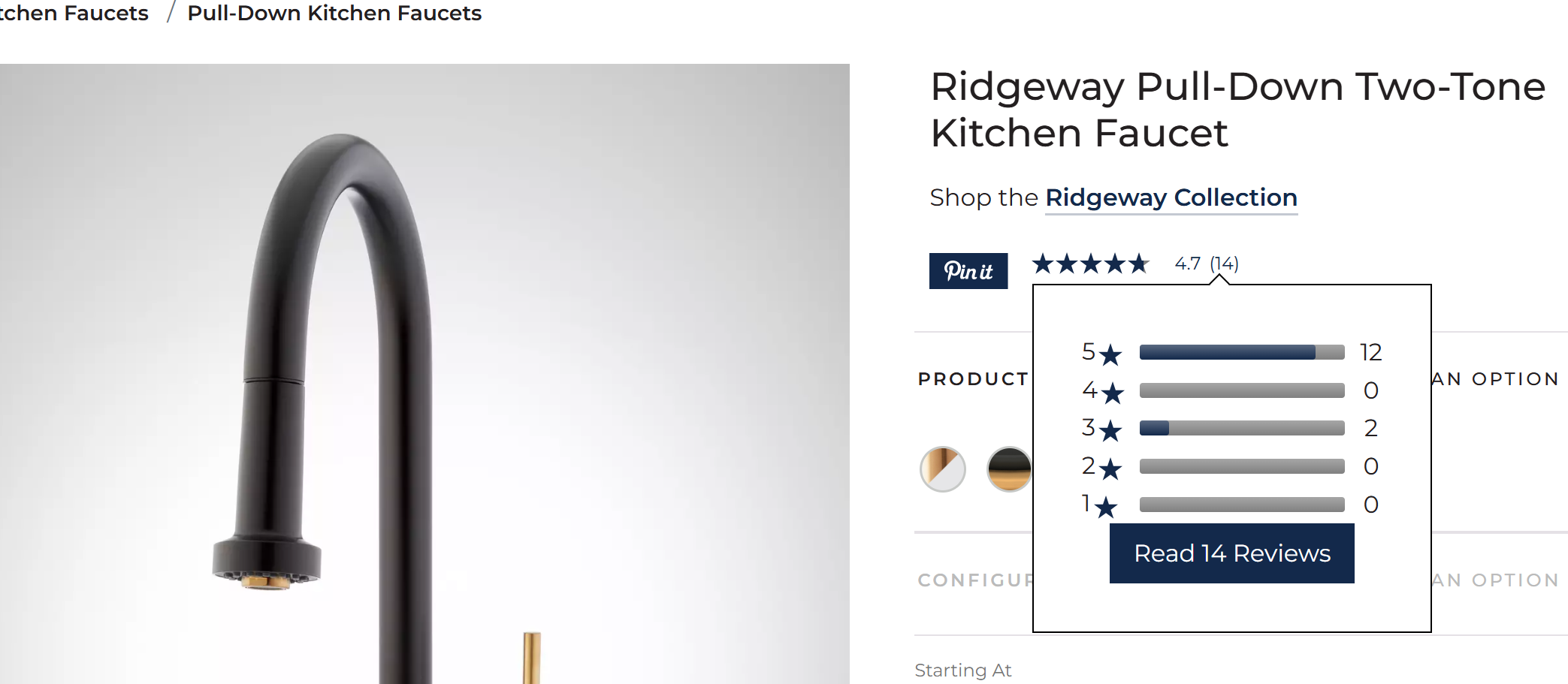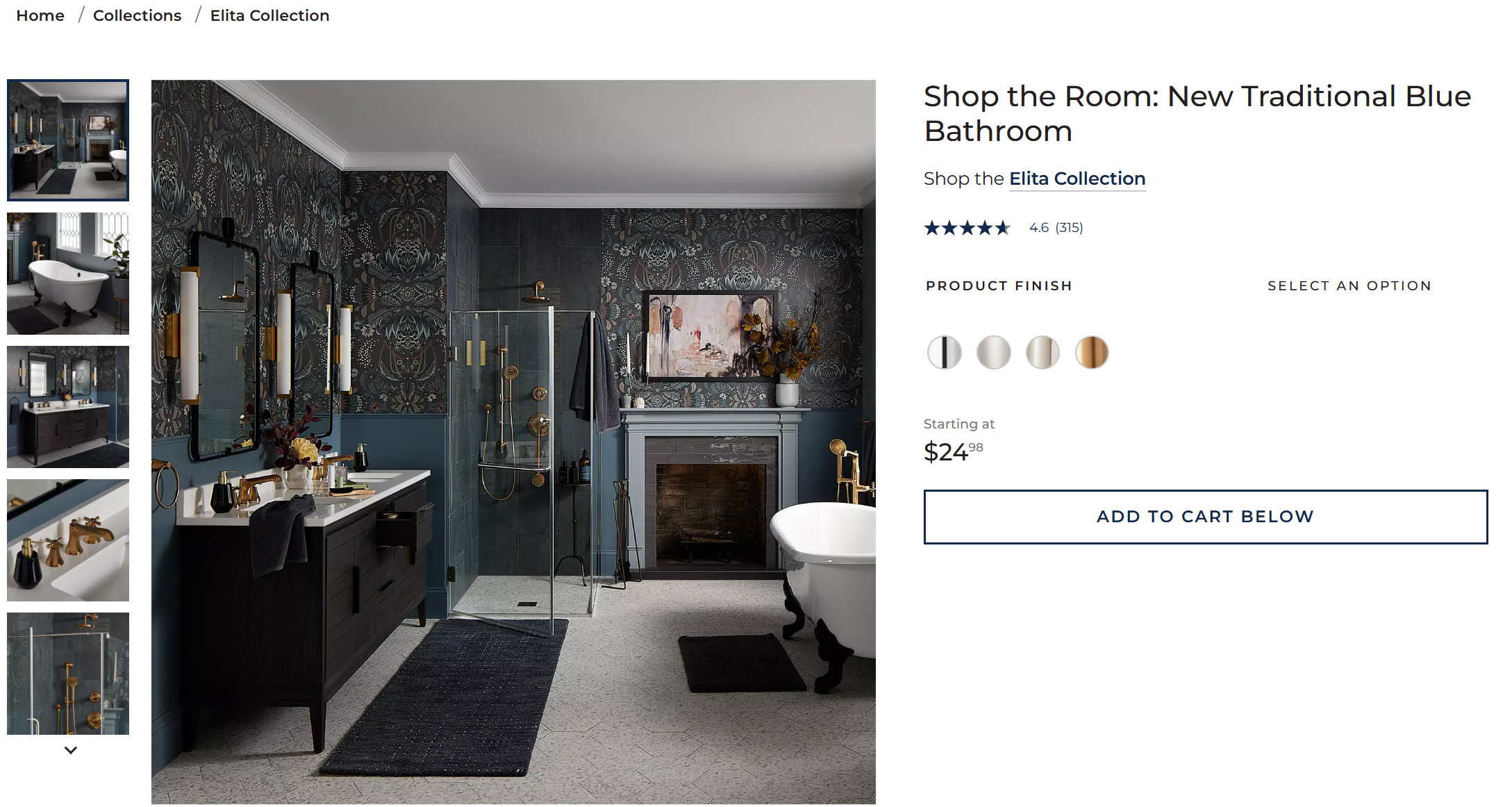Product Display Pages
PDPs were a group effort, relying on the collaboration of creative, product data, merchandising, developers, and SEO. My part in managing these pages consisted of on-page work, such as Web SKU naming, meta tags, and monitoring internal links; technical work, such as schema markup, and canonical tags; and managing reviews to increase engagement.
On-Page
META TAGS
We opted for product names that were descriptive and approached meta descriptions the same way. I worked with a Salesforce point of contact to define and create dynamic meta tag rules that injected information based on attributes of interest. Vanities, for example, included features, depth, height, and SKU. These values would update based on available fields for each category. This was a tactic used to increase CTR on product pages.
URLs
Product names define the URLs, which in turn, provide context to search engines. In some cases when a product name change was needed, I would quickly analyze the current URL to assess if a redirect was necessary due to better search intent, high backlinks, or keyword volume.
INTERNAL LINKS
Categorization was used to display breadcrumbs and support the internal link strategy. I also helped support a collection inter-linking project by QA’ing final URLs and ensuring they were added with the proper href attribution. Links could also be found in product descriptions, so it was important to keep those links from breaking or redirecting.
Technical SEO
SCHEMA MARKUP
These included breadcrumbs, product (offer, price, availability, etc.), and review schema; it helped establish the relationship between products. I provided the direction for structured data when our new product sets launched to define the relationship between products bundled under these sets, and kitted products that were merchandised in a particular way. I also implemented a new variant schema soon after Google rolled out it for all variant products. This gave our child SKUs better organic visibility. Adding schema for Merchant Listings helped the brand earn a Top Quality Store badge, which also helped increase product visibility.
CANONICAL TAGS
One of my first big projects was implementing a canonical strategy. Hundreds of variant pages showed similar, and in some cases duplicate, content. To make sure the correct pages were indexed, I worked with product data and developers to understand each product type, how it was set up on the backend, and implement the canonical strategy based on my research.
ROBOTS.TXT
There were many pages we did not want to be indexed, this is where our robots.txt file came in handy. I made very few changes during my time, but all the changes were made to keep the crawl budget low.
Ratings & Reviews
Pages with reviews consistently showed higher AOV and CVR, which is why increasing visibility and engagement was a priority.
The sample page can be viewed live on the website.
Managing product families, using Bazaarvoice, allowed us to share reviews across variants and increase visibility, as well as average ratings. Keeping the attribution to the original review and only sharing reviews across related product families kept us in compliance with FTC standards.
Review Highlights replaced the Helpful/Unhelpful Billboard. The previous experience showed outdated reviews from one submission, whereas the Review Highlights take the whole and summarize what customers love (or didn’t love) the most about the prd
The Histogram allows desktop viewers to hover over the star rating and see the breakdown of reviews. This is part of review engagement and gives shoppers a better idea of how past customers are rating this product on a more granular level without having to scroll down the page.
Product Sets
Product Sets launched in late 2024 and were used to promote collections and create shoppable experiences for monthly campaigns. SEO supported by ensuring the on-page and technical elements were sound and that reviews were properly displayed.
Tasks
Providing page title and meta description copy
Identifying the best product schema for bundled items
Creating a new URL structure
Researching and executing new logic for managing product families (shared reviews)
QA’ing internal links
The sample below can be viewed live on the website.






